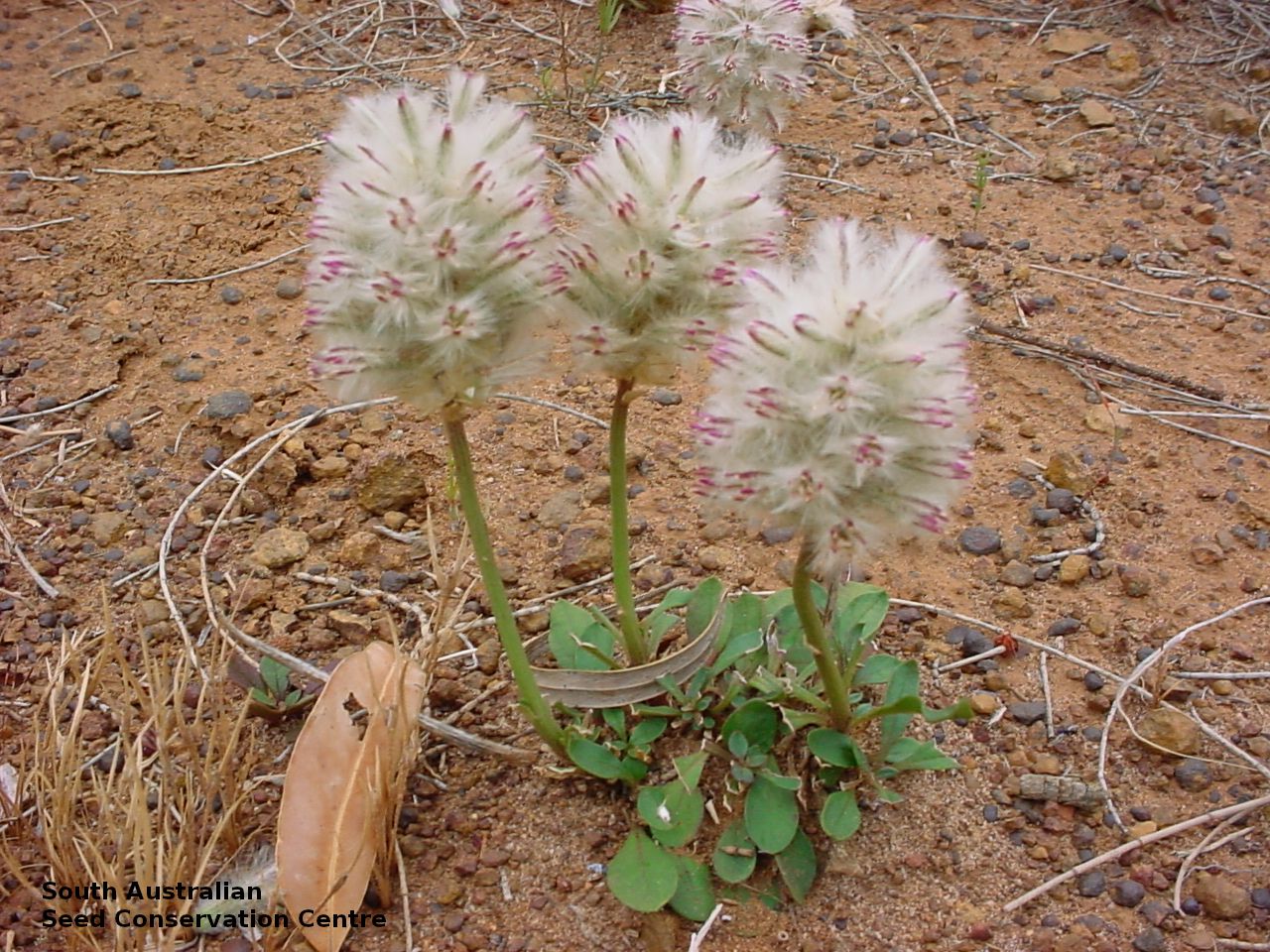
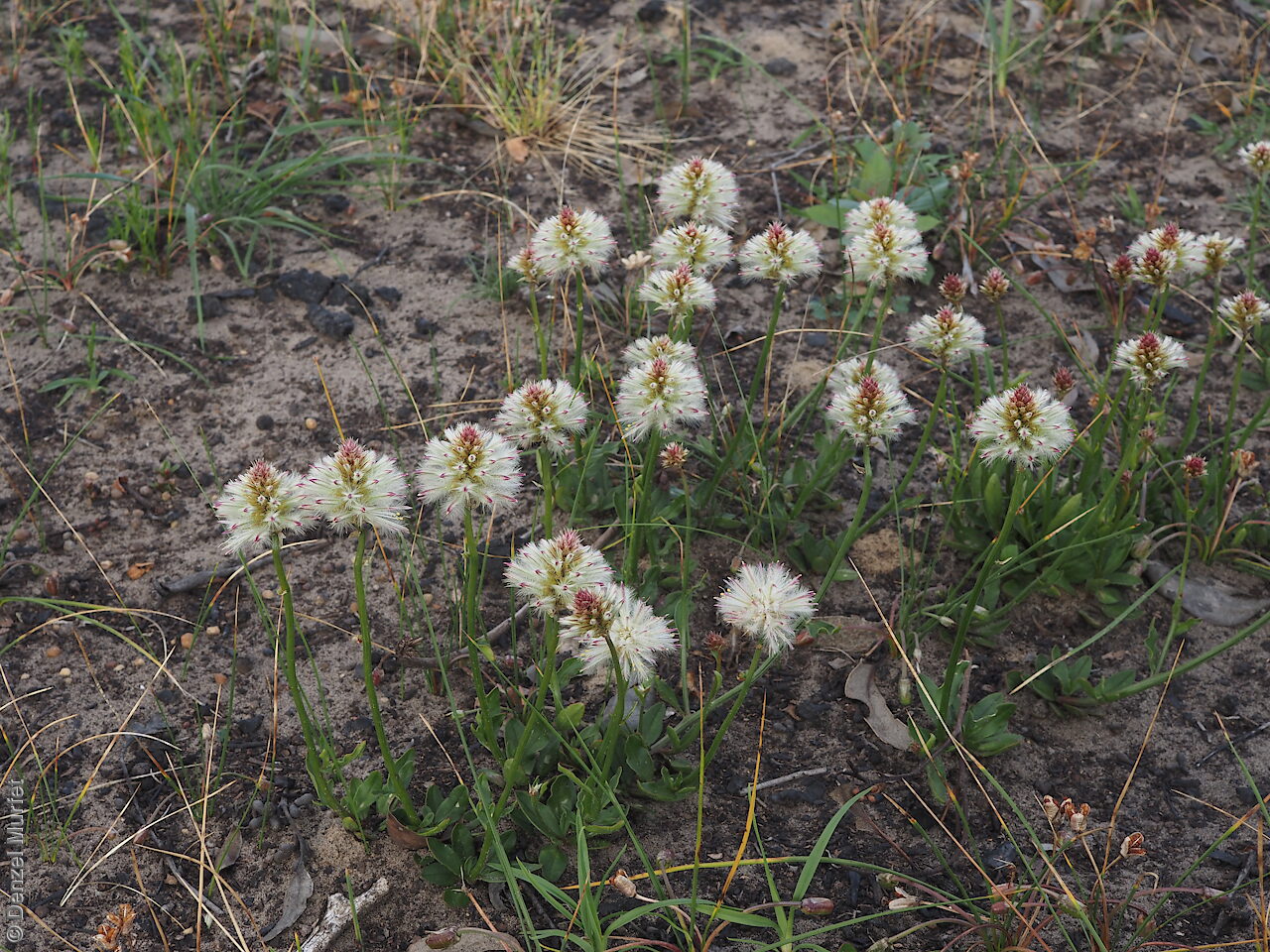
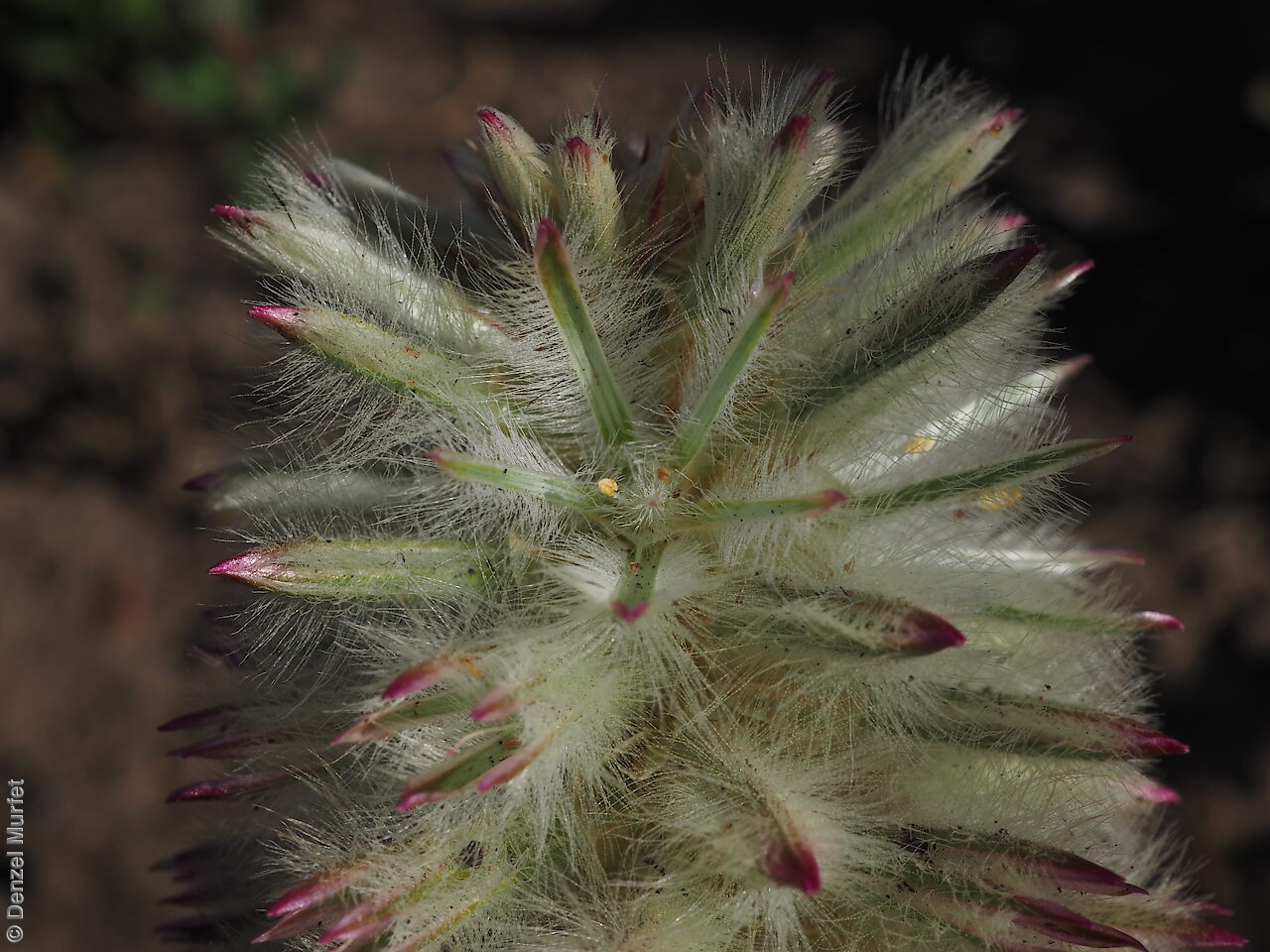
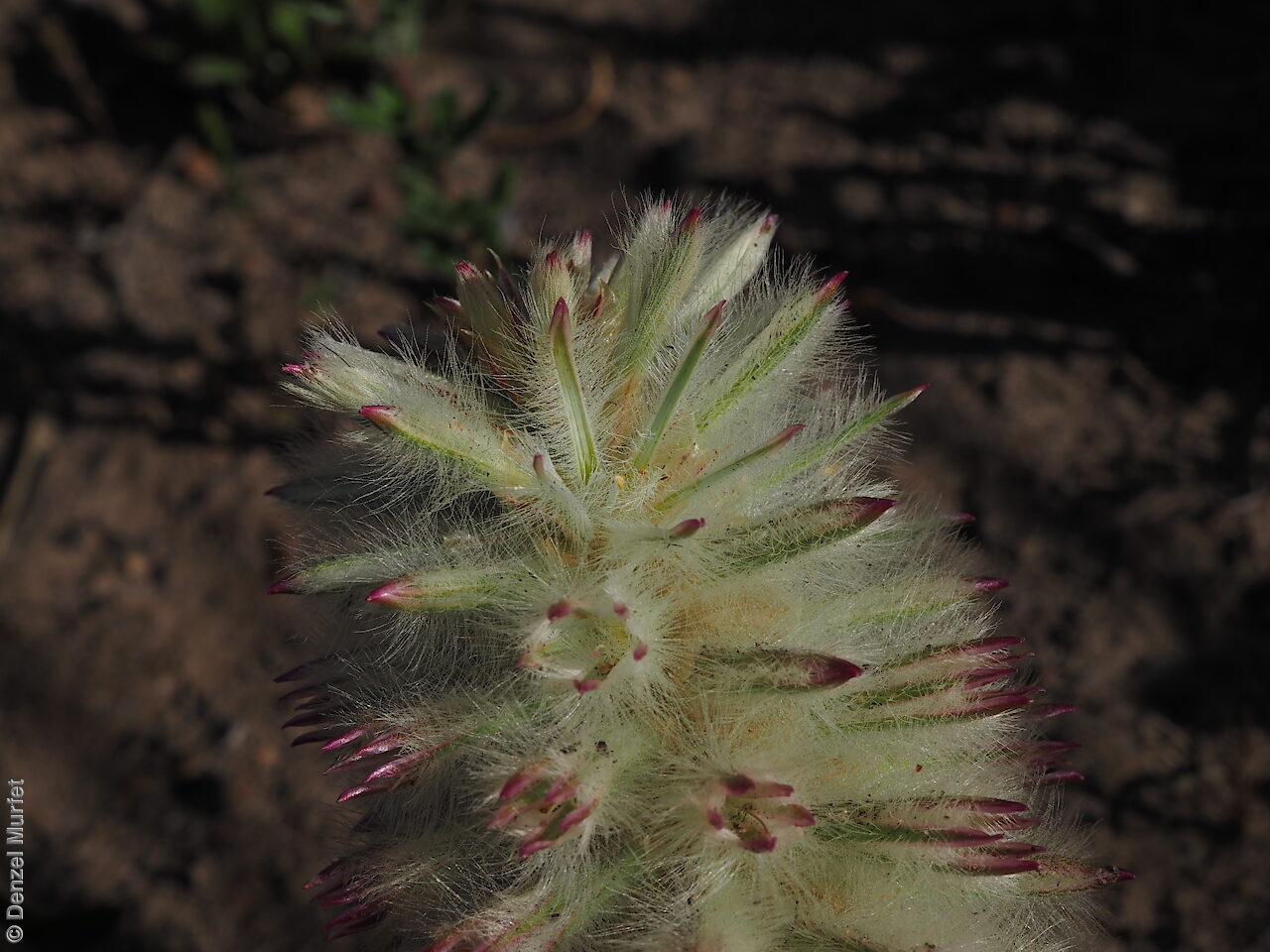
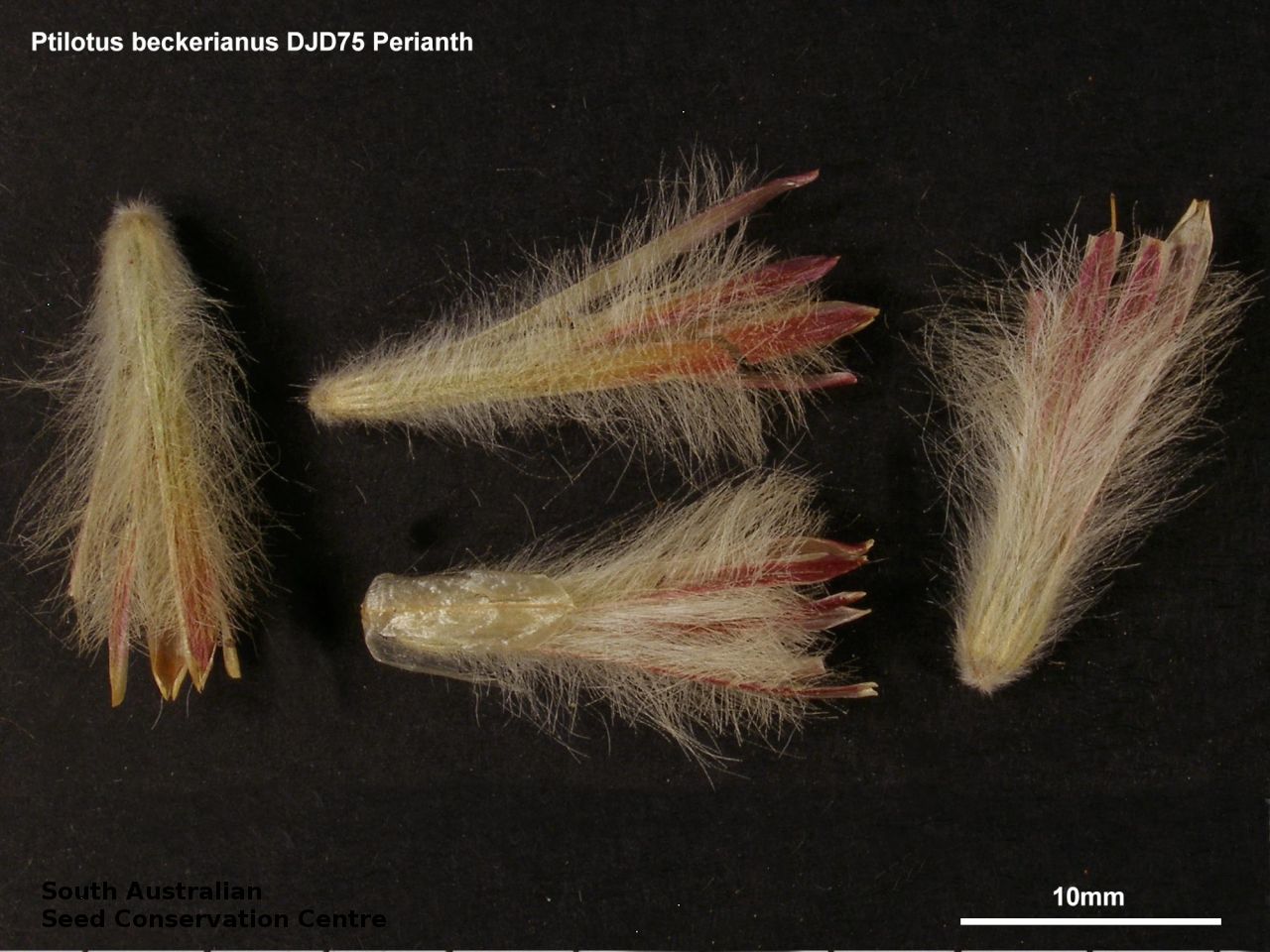
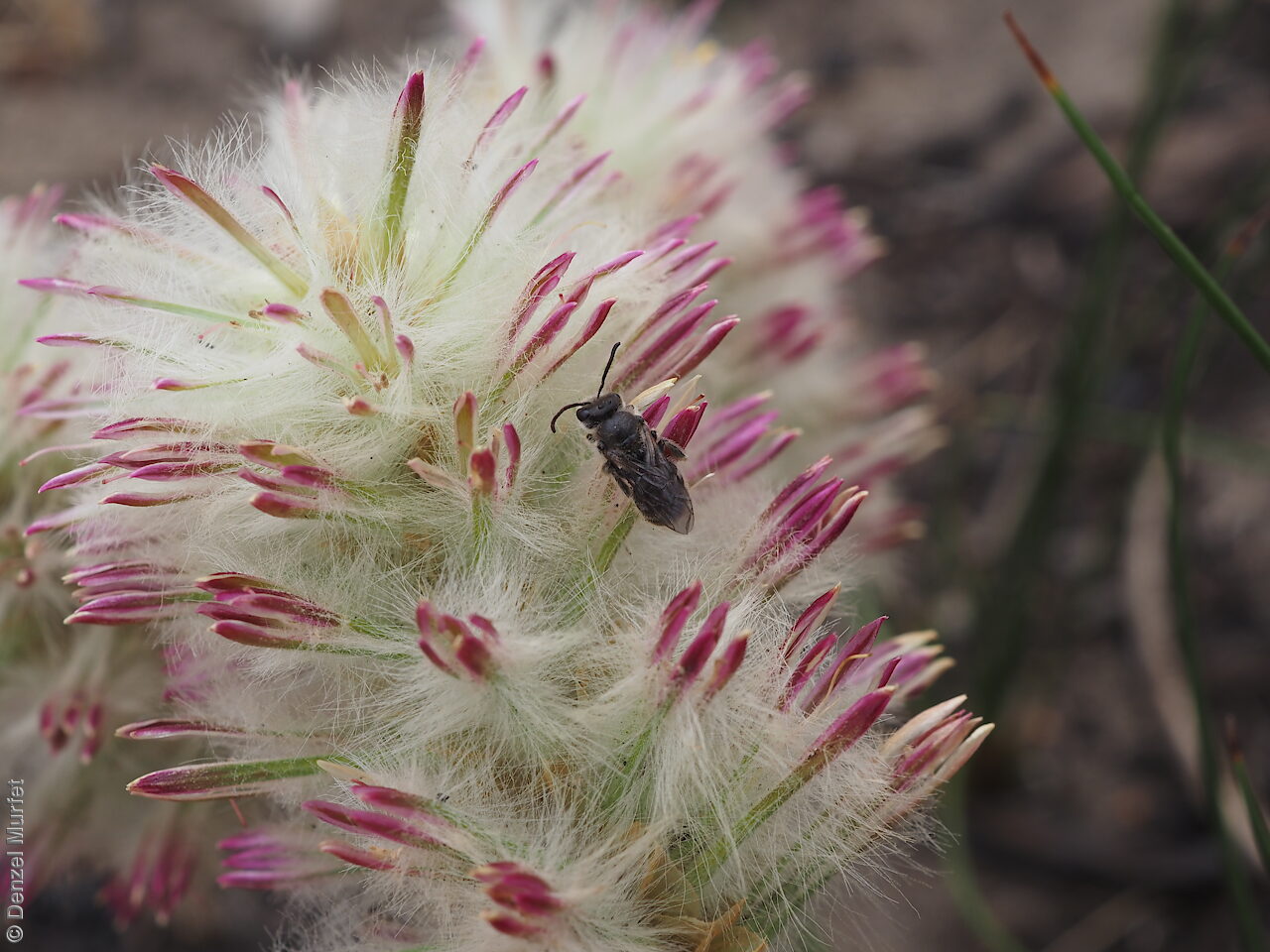
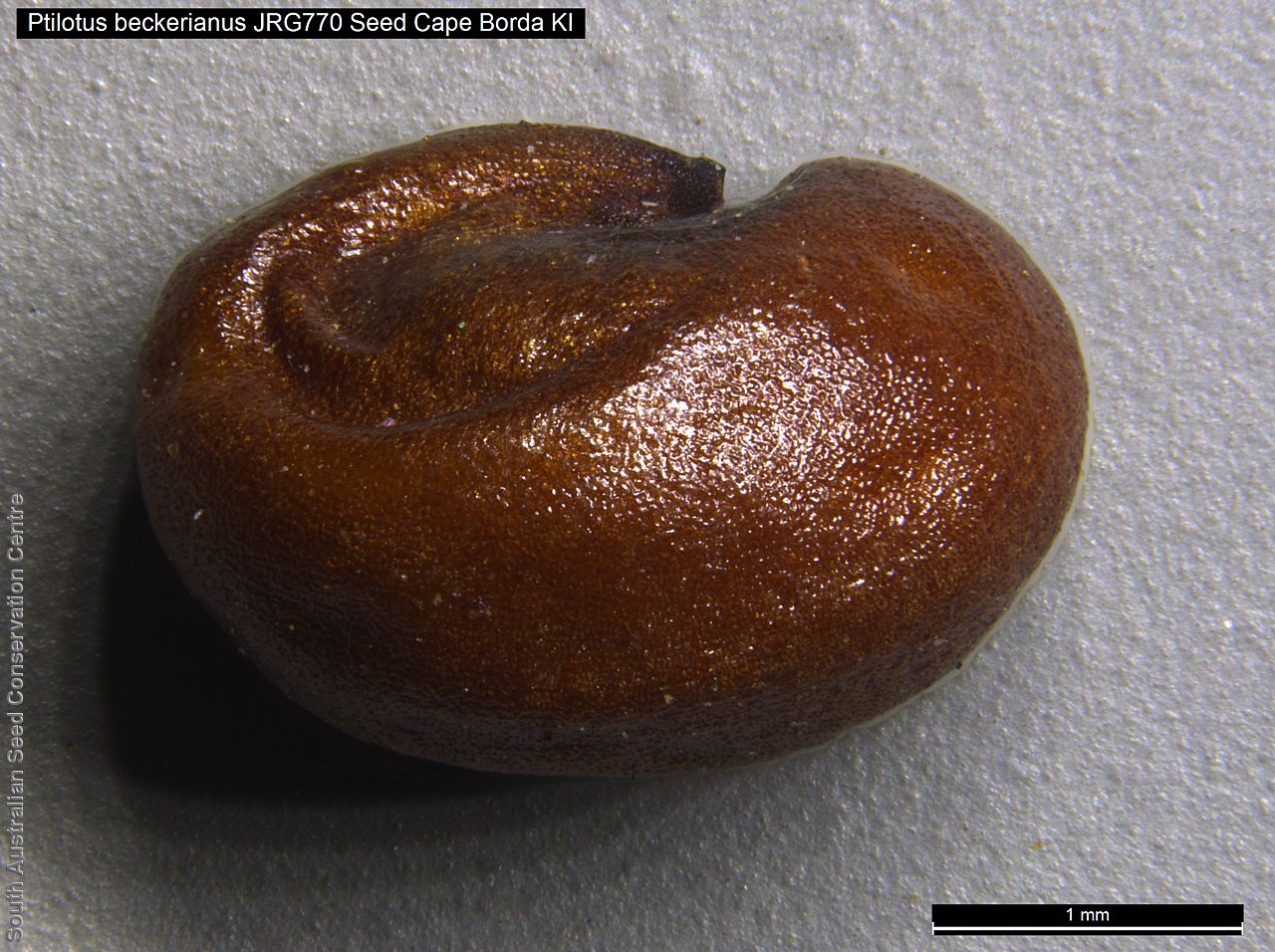
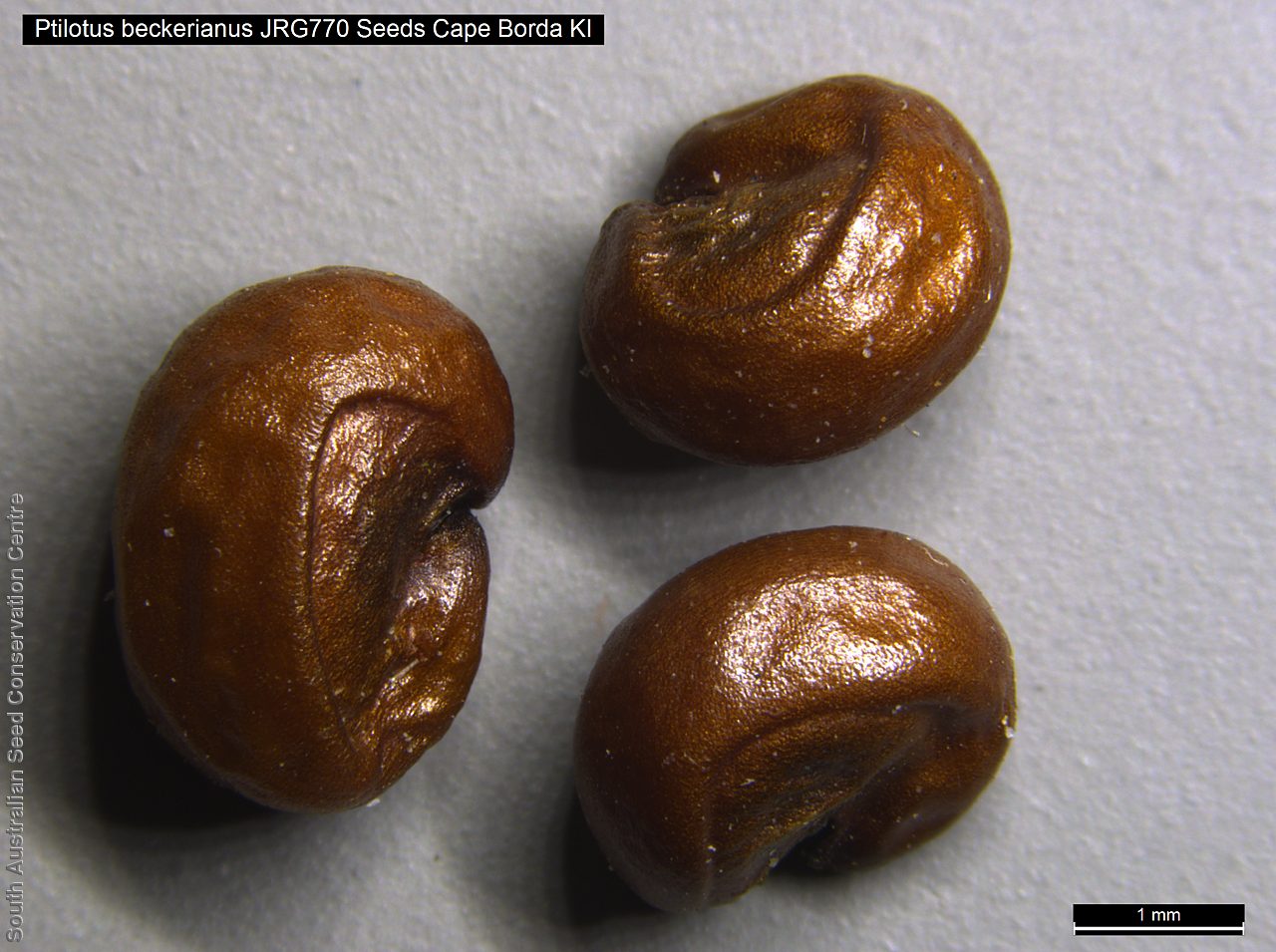
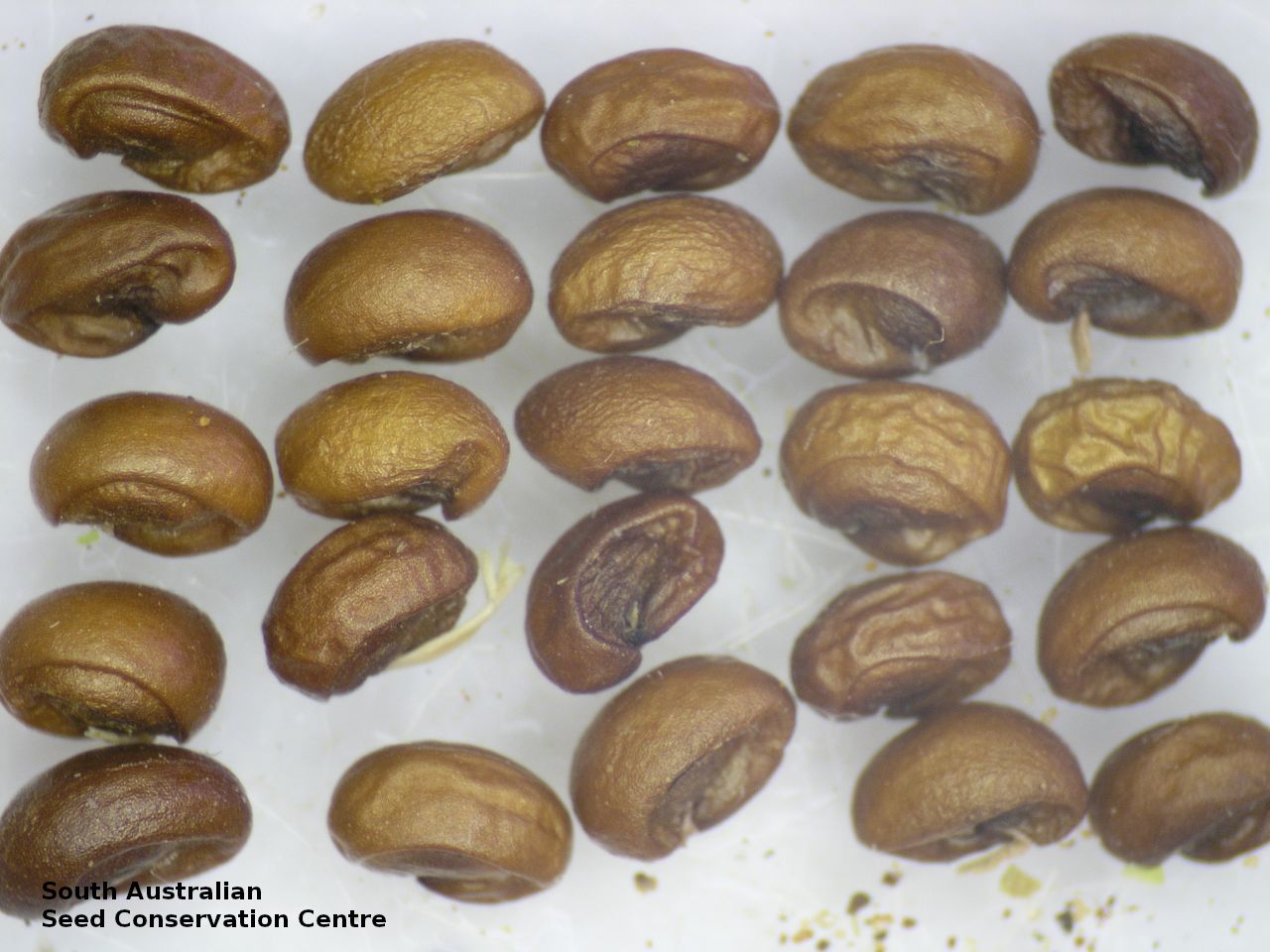
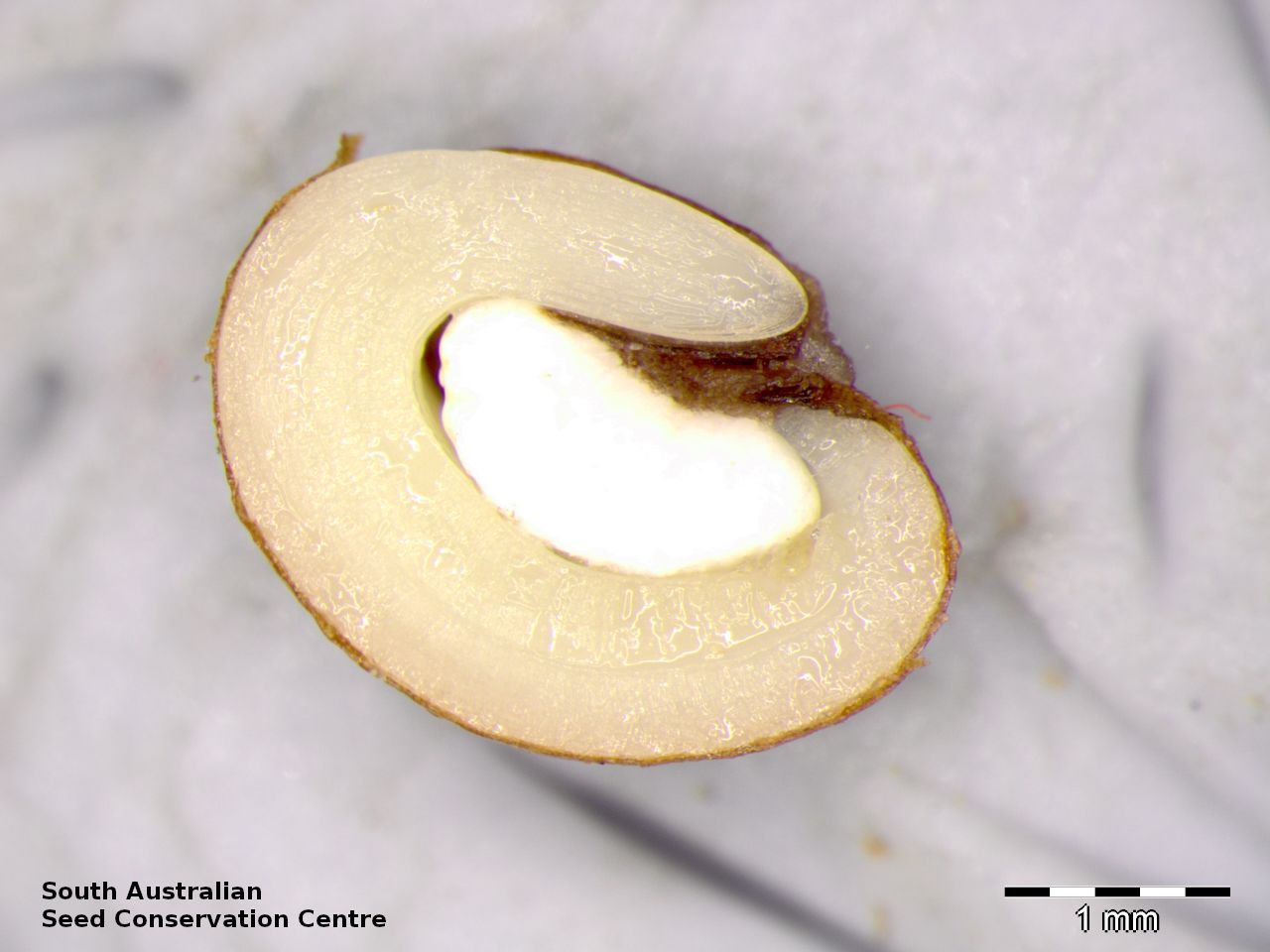
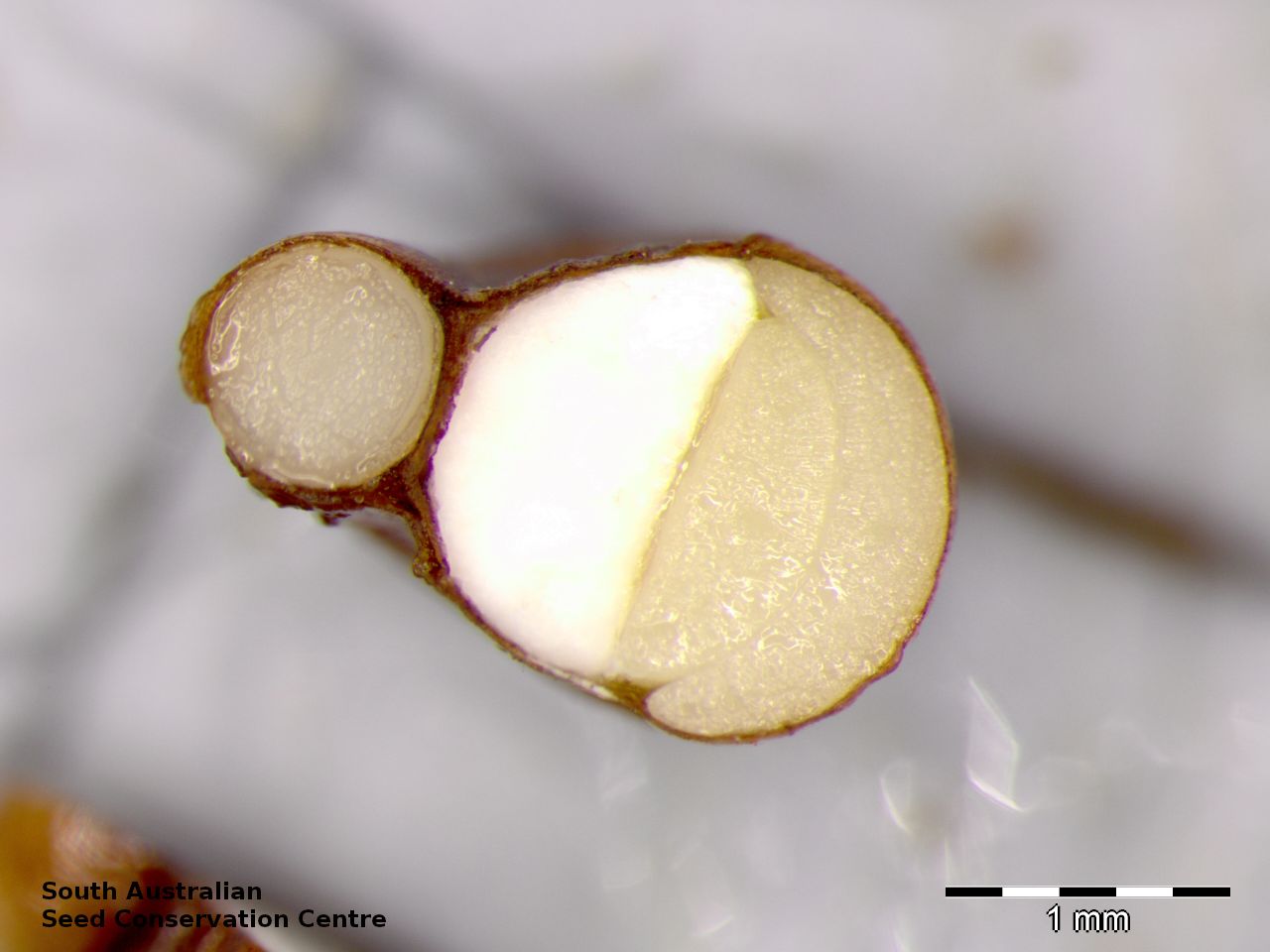
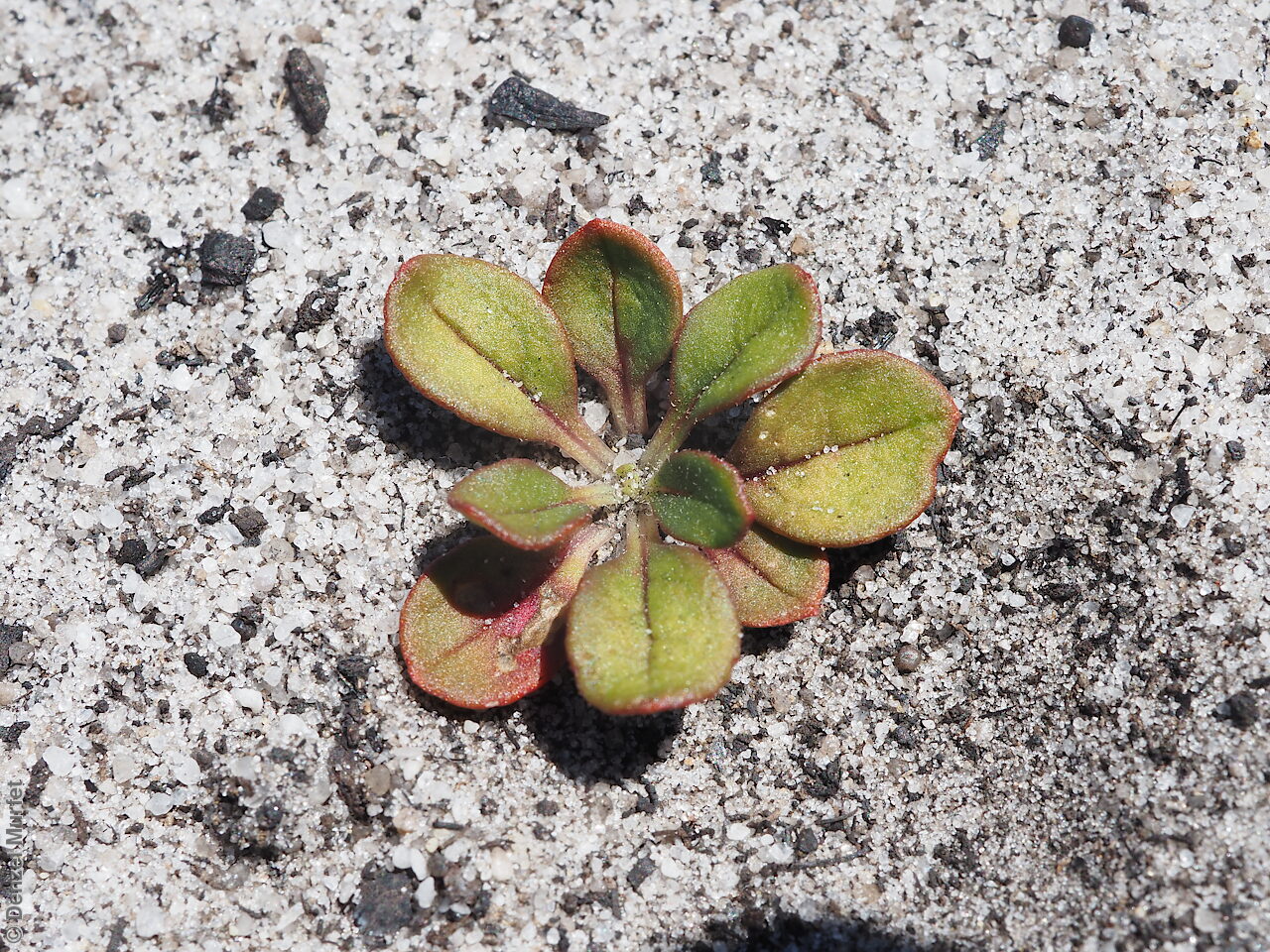

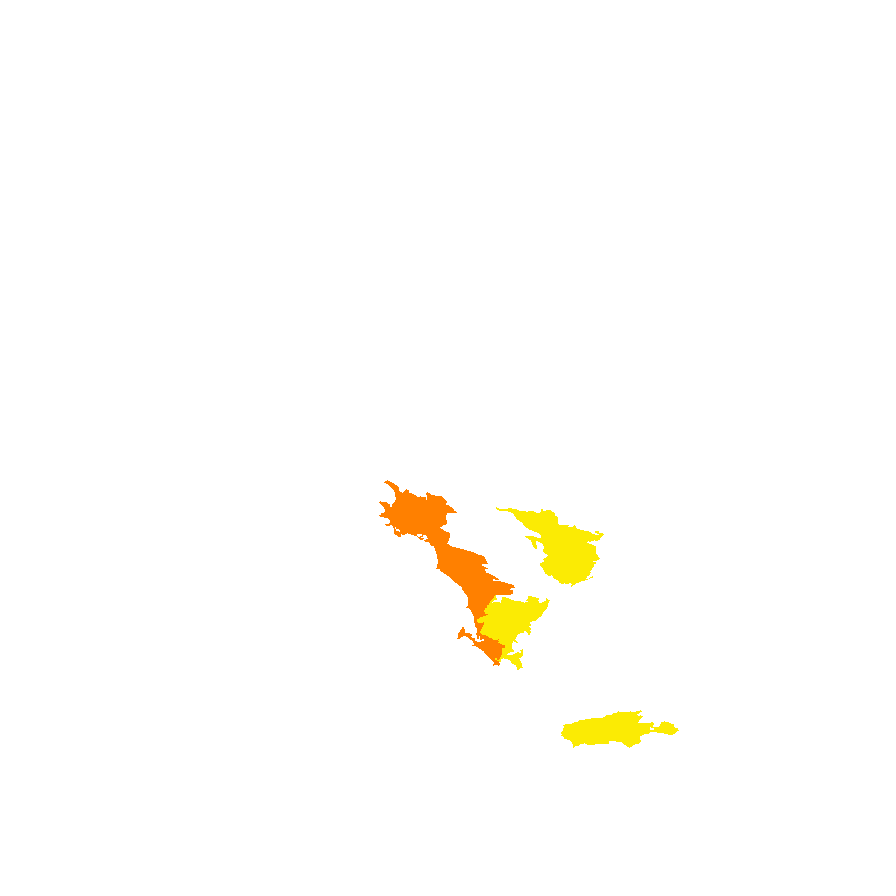
Prior names
Trichinium beckerianum
Ptilotus beckeri, orth.var.
Common names
Ironstone mulla mulla
Etymology
Ptilotus from the Greek 'ptilotos' meaning feathered or winged; referring to the hairy flowers. Beckerianus named after Ludwig Philipp Heinrich Becker (1808-1861), a German scientist, artist and botanical illustrator, and lithographer, who Illustrated works for Ferdinand Mueller.
Distribution and status
Endemic to South Australia and found on Kangaroo Island and the lower Eyre Peninsula, growing on sand, laterite or ironstone gravel, on flats or gentle slopes. Native. Very rare in South Australia.
Herbarium regions: Eyre Peninsula, Kangaroo Island
AVH map: SA distribution map (external link)
Plant description
Erect perennial herbs to 20 cm high with stems and leaves glabrous. Leaves spathulate, obovate or narrowly elliptic, with basal leaves to 50 mm long and 10 mm wide, stem leaves to 32 mm long and 7 mm wide. Inflorescences terminal, hemispherical, ovoid, globose or shortly cylindrical, to 9 cm long, with 60 white, pinkish tinged when fresh flowers covered in dense hairs. Flowering between August and January. Fruits are cylindrical head containing numerous long papery and hairy fruits, each containing one seed. Seeds are orange-brown, reniform to 3 mm long and 2 mm wide. Seed embryo type is peripheral.
Seed collection and propagation
Collect seeds between November and February. Be very careful when collecting this species as the fruits contain fine hairs that may cause an allergic reaction for some people. Collect the fruit heads when dried to a pale straw colour. Each fruit should come off the head easily when fingers are rubbed up the stem. Collect more fruits than required as not all fruits will have a viable seed. Be very careful when cleaning this species as the fruits contain fine hairs that may cause an allergic reaction for some people. To clean, rub the fruit heads gently to dislodge the seed at the base of each fruit. Use a sieve to separate the unwanted material. Store the seeds with a desiccant such as dried silica beads or dry rice, in an air tight container in a cool and dry place. Seed viability is usually high but seed availability tend to be low. Seeds are non-dormant, viable seed should germinate readily.
Fire Response
Obligate re-spouter and re-seeder, only a small amount of seedlings observed, with most being from basal resprouting from underground roots.
Longevity: ?? years
Time to flowering: 2 year
Recovery Work
In 2020-2021 this species was assessed post-fire in 1 year and 2 year old fire scars. A total of 40 seeds have been collected & banked for a population in the 2020 fire scar. Further populations will be assessed and seeds collected on Kangaroo Island in 2021–2022. Germination screening testing the response to fire cues will be undertaken in 2021.This project was supported by the Project Phoenix program.
| Location | No. of seeds (weight grams) | Number of plants | Date collected | Collection number Collection location | Date stored | % Viability | Storage temperature |
|---|---|---|---|---|---|---|---|
| BGA MSB | 1,200 (16.7 g) 1,200 (16.7 g) | 40 | 8-Dec-2004 | DJD75 Eyre Peninsula | 28-Mar-2006 | 0% | +5°C, -18°C |
| BGA | 26 (0.2 g) | 60 | 6-Jan-2006 | K.Pobke Eyre Peninsula | 1-Aug-2007 | 100% | -18°C |
| BGA | 123 (0.520 g) | 75+ | 19-Feb-2022 | D.A.Young Kangaroo Island | 7-Jul-2022 | 100% | -18°C |
| BGA | 165 (0.675 g) | 80+ | 21-Jan-2022 | D.A.Young Kangaroo Island | 7-Jul-2022 | 100% | -18°C |
| BGA | 1,300 (7.55 g) | 200+ | 21-Jan-2009 | DJD1375 Kangaroo Island | 7-Jul-2022 | 85% | -18°C |
Number of plants: This is the number of plants from which the seeds were collected.
Collection location: The Herbarium of South Australia's region name.
% Viability: Percentage of filled healthy seeds determined by a cut test or x-ray.